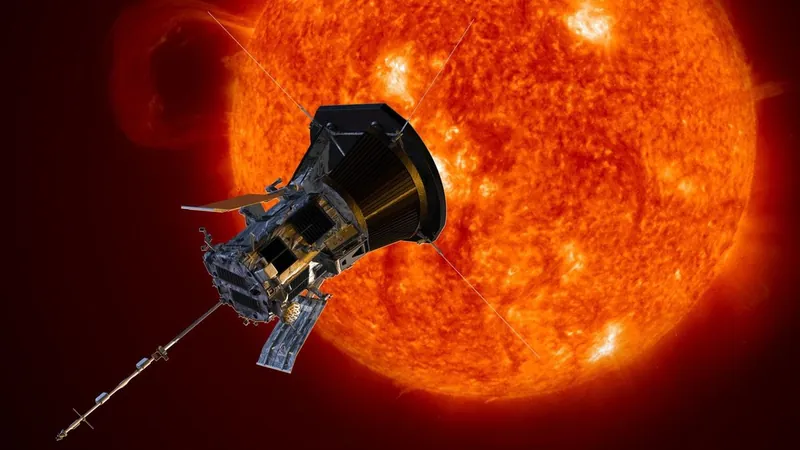
NASA's Parker Solar Probe Sends Thrilling First Update from Epic Sun-Diving Mission!
2025-01-02
Author: Ming
NASA's Parker Solar Probe Sends Thrilling First Update from Epic Sun-Diving Mission!
On New Year's Day, NASA's Parker Solar Probe brought some electrifying news to the world, following its record-setting approach to the sun. This groundbreaking mission, designed to explore our home star like never before, has successfully begun beaming back important data after its historical flyby.
On January 1, mission control at Johns Hopkins University's Applied Physics Laboratory (APL) in Maryland received the probe's first set of telemetry data—which includes vital information about the spacecraft's health and its scientific instruments. According to NASA's update, everything is operating smoothly and as intended post-rendezvous with the sun.
Michael Buckley, a spokesperson for the Parker Solar Probe mission, expressed his enthusiasm, stating, "All is looking good with the spacecraft systems and instrument operations. It really is a remarkable spacecraft!" This is a sentiment shared widely among scientists eager to delve into the data collected during the probe's close encounter.
During its historic dive, the Parker Solar Probe ventured within a staggering 3.8 million miles (6.1 million kilometers) of the sun's surface—setting a new record for proximity to our star and allowing it to gather invaluable data. Helene Winters, the mission's program manager, emphasized the significance of this event: "While Parker Solar Probe was closer to the sun than any other human-made object in history, it operated just as it was designed to do, and made observations that no one has been able to make before."
The initial telemetry data continues to stream in through NASA’s Deep Space Network, with additional scientific data expected to reach Earth later this month when the spacecraft's powerful antenna aligns perfectly for optimal transmission.
As Parker Solar Probe sped through the sun's atmosphere at an incredible velocity of 430,000 miles per hour (690,000 kilometers per hour)—quick enough to traverse the distance between Tokyo and Washington, D.C. in under a minute—it further solidified its reputation as the fastest human-made object ever created. The scientists had a brief communication blackout during this thrilling phase, but a much-anticipated beacon tone received shortly after indicated the probe's safe condition.
Equipped with a robust, custom-designed heat shield that can withstand temperatures soaring up to 1,800 degrees Fahrenheit (982 degrees Celsius), the Parker Solar Probe is engineered for the extreme environment it encountered. This groundbreaking mission aims to unravel enduring mysteries surrounding the sun, particularly the enigma of why the corona, or outer atmosphere, becomes hotter the further it extends from the solar surface.
Heliophysicist Kelly Korreck pointed out the significance of this research: "The data is crucial for the science community because it gives us another vantage point. Parker Solar Probe has revolutionized our understanding of the sun by providing firsthand insights into the solar atmosphere."
Looking ahead, the Parker Solar Probe has two additional flybys planned in 2025—scheduled for March 22 and June 19—bringing more thrilling discoveries as it dives deep into the sun's secrets. With every pass, humanity inches closer to unlocking the mysteries of our nearest star, making this mission a landmark achievement in space exploration!


 Brasil (PT)
Brasil (PT)
 Canada (EN)
Canada (EN)
 Chile (ES)
Chile (ES)
 Česko (CS)
Česko (CS)
 대한민국 (KO)
대한민국 (KO)
 España (ES)
España (ES)
 France (FR)
France (FR)
 Hong Kong (EN)
Hong Kong (EN)
 Italia (IT)
Italia (IT)
 日本 (JA)
日本 (JA)
 Magyarország (HU)
Magyarország (HU)
 Norge (NO)
Norge (NO)
 Polska (PL)
Polska (PL)
 Schweiz (DE)
Schweiz (DE)
 Singapore (EN)
Singapore (EN)
 Sverige (SV)
Sverige (SV)
 Suomi (FI)
Suomi (FI)
 Türkiye (TR)
Türkiye (TR)
 الإمارات العربية المتحدة (AR)
الإمارات العربية المتحدة (AR)